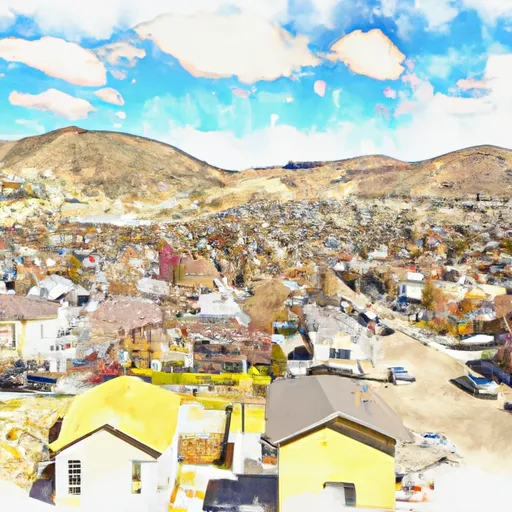-
 Snoflo Premium
Snoflo Premium
Get unlimited access to all our content
With no Ad interruptions! - Start Your Free Trial Login with existing account
Tuscarora
Eden Index
Climate
7.2
•
Recreation
•
Community
1.1
•
Safeguard
3.2/10

Tuscarora is a small unincorporated community located in the northeastern part of Elko County, Nevada. Situated at an elevation of around 6,000 feet, Tuscarora experiences a high desert climate characterized by hot summers and cold winters. Summers are typically dry with temperatures reaching the mid-80s Fahrenheit, while winters are cold with average temperatures ranging from the low 20s to high 30s Fahrenheit. The area receives relatively low annual precipitation, primarily in the form of snow during the winter months.
The hydrology of Tuscarora is primarily influenced by the local streams and tributaries, including the Tuscarora Creek. These water sources contribute to the hydrological constituents of the region, supporting the growth of vegetation and wildlife.
Outdoor recreation opportunities in Tuscarora are abundant, attracting nature enthusiasts and adventure seekers. The area offers excellent opportunities for hiking, camping, and wildlife viewing. Tuscarora is also known for its historic mining sites, which provide a unique glimpse into the region's gold rush history. Visitors can explore the desert landscape, discover hidden gems, and experience the tranquility of this scenic Nevada town.
What is the Eden Index?
The Snoflo Eden Index serves as a comprehensive rating system for regions, evaluating their desirability through a holistic assessment of climate health, outdoor recreation opportunities, and natural disaster risk, acknowledging the profound impact of these factors on livability and well-being.
Climate Health Indicator (CHI): 7.2
Tuscarora receives approximately
371mm of rain per year,
with humidity levels near 65%
and air temperatures averaging around
6°C.
Tuscarora has a plant hardyness factor of
5, meaning
plants and agriculture in this region thrive during a short period during spring and early summer. Most
plants will die off during the colder winter months.
By considering the ideal temperature range, reliable water supplies, clean air, and stable seasonal rain or snowpacks, the Climate Health Indicator (CHI) underscores the significance of a healthy climate as the foundation for quality living.
A healthy climate is paramount for ensuring a high quality of life and livability in a region, fostering both physical well-being and environmental harmony. This can be characterized by ideal temperatures, reliable access to water supplies, clean air, and consistent seasonal rain or snowpacks.
Weather Forecast
Streamflow Conditions
Middle Snake-Boise
Area Rivers
Middle Snake-Boise
Snowpack Depths
Middle Snake-Boise
Reservoir Storage Capacity
Middle Snake-Boise
Groundwater Levels
Recreational Opportunity Index (ROI):
The Recreational Opportunity Index (ROI) recognizes the value of outdoor recreational options, such as parks, hiking trails, camping sites, and fishing spots, while acknowledging that climate plays a pivotal role in ensuring the comfort and consistency of these experiences.
Access to outdoor recreational opportunities, encompassing activities such as parks, hiking, camping, and fishing, is crucial for overall well-being, and the climate plays a pivotal role in enabling and enhancing these experiences, ensuring that individuals can engage in nature-based activities comfortably and consistently.
Nearby Ski Areas
Catastrophe Safeguard Index (CSI):
The Catastrophe Safeguard Index (CSI) recognizes that natural disaster risk, encompassing floods, fires, hurricanes, and tornadoes, can drastically affect safety and the overall appeal of an area.
The level of natural disaster risk in a region significantly affects safety and the overall livability, with climate change amplifying these risks by potentially increasing the frequency and intensity of events like floods, fires, hurricanes, and tornadoes, thereby posing substantial challenges to community resilience and well-being.
Community Resilience Indicator (CRI): 1.1
The Community Resilience Indicator (CRI) recognizes that education, healthcare, and socioeconomics are crucial to the well-being of a region. The CRI acknowledges the profound impact of these elements on residents' overall quality of life. By evaluating educational resources, healthcare accessibility, and economic inclusivity, the index captures the essential aspects that contribute to a thriving community, fostering resident satisfaction, equity, and social cohesion.

